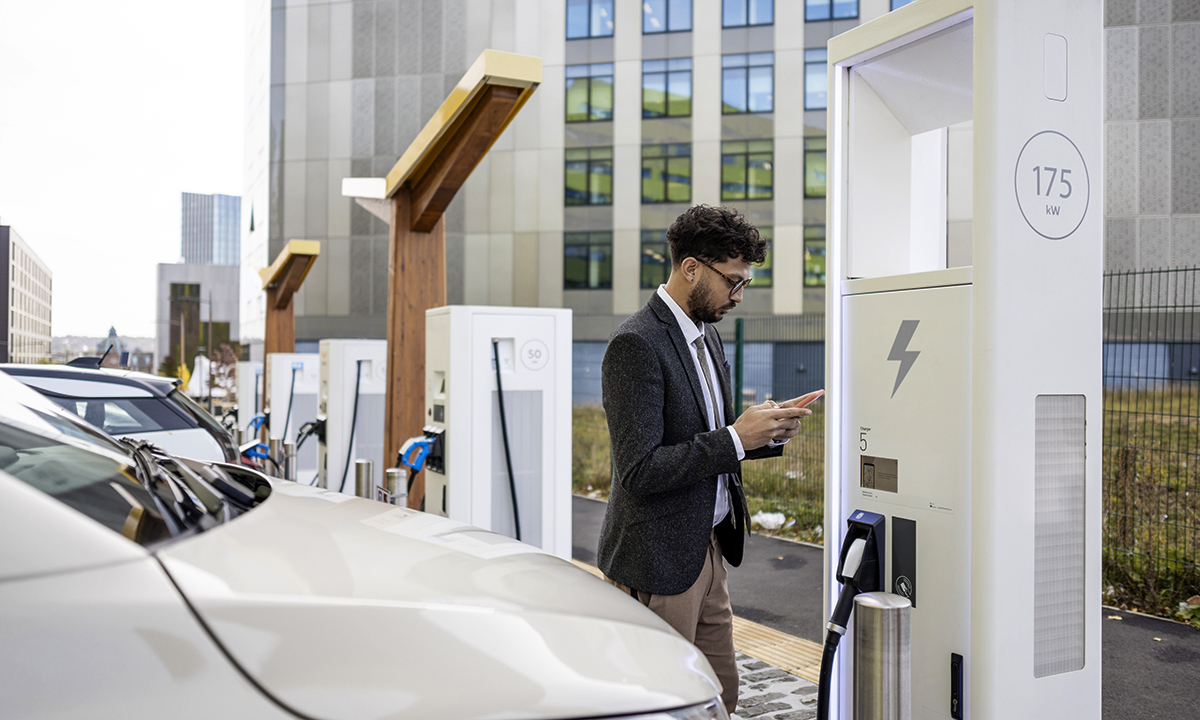This article originally appeared in the World Economic Forum on March 22, 2023.
Electric vehicle (EV) sales jumped by more than 60% globally in 2022, hitting another record. Numerous factors contributed to this growth, from increased model choices and improved car battery range to government subsidies and high oil prices.
Yet, despite this fast growth, EVs still account for only about 14% of total new car sales and, at this rate, it will take decades to fully electrify all vehicles on the road. Governments need to do much more to encourage and prepare for EV adoption.
This is because transportation is a major contributor to carbon emissions, accounting for 37% of CO2 in 2021, according to the IEA. Road travel accounts for three-quarters of transport emissions, most of which come from passenger vehicles.
Millions of additional EVs need to be on the road by 2030 to limit global warming to 1.5 degrees Celsius and to reach net zero emissions by mid-century. More than 100 million chargers, including 6.2 million public ones, are necessary to meet that demand, according to the International Council on Clean Transportation.
National governments control many of the most important levers driving this transformation, but cities also play an important role. Oslo, London, Los Angeles and a growing number of other cities are investing in critical charging infrastructure and providing financial incentives, such as tax breaks, as well as quality-of-life perks, such as free parking and special road access, to encourage EV adoption, according to the latest Urban Mobility Readiness Index from the Oliver Wyman Forum and the University of California, Berkeley.
EV adoption: charging forward
Demand for EVs could increase in coming years as a number of nations, as well as US states, agree to ban sales of new combustion engine vehicles within the next 10 to 15 years. And China, the world’s largest automotive market, has declared ambitious decarbonisation targets.
Many consumers expect to switch before such rules kick in. About four in 10 said they plan to buy or lease an EV when they acquire their next personal car, according to a recent 10-country survey by the Oliver Wyman Forum. Germany had the most interest, with 51% of respondents planning to acquire EVs, but even there it will take decades to fully electrify.
What are the most important factors for consumers considering whether to convert to electric? Some fall to governments and others to automakers. The availability of charging stations is consumers’ top priority, according to the Forum survey. How far they can travel on a single charge is also key. 'Range anxiety' is decreasing, but 'charging anxiety' grows because infrastructure remains spotty and often unreliable.
Investing in infrastructure
Cities can play an important role in encouraging EV adoption by ensuring that adequate infrastructure is available in all neighbourhoods. People with their own garages or driveways can add the necessary charging infrastructure, while those that park on the street need to rely on public chargers, which are often scarce, utilised and can cost more than normal electricity rates.
Leading cities are already trying to ensure adequate access. Los Angeles, for example, has more than 18,000 commercial chargers, 3,000 of which are publicly accessible. It is working to expand those options and has installed over 450 chargers on streetlights and 50 on power poles in areas with apartment complexes or near amenities. It plans to add 200 EV pole chargers each year.
Amsterdam has set an ambitious goal of becoming a zero-emissions city by 2025. As well as significantly expanding its charging infrastructure, the city provides a variety of incentives and regulations to encourage EV adoption, including parking privileges for emission-free taxis and subsidies for business fleets and private owners.
Many cities are also increasing access by getting businesses to install more publicly accessible chargers. Places such as Tucson, Arizona, are using new building codes and zoning rules to get developers to install or leave space for rapid-charging stations when they construct a project.
Financial incentives
Cost remains a major barrier to EV ownership despite price declines and more model options in recent years. The most generous tax breaks typically come from national governments, but cities are also providing monetary benefits to encourage EV adoption.
Oslo, which topped the Urban Mobility Readiness Index’s Sustainable Mobility ranking, aims to be one of the first zero-emission cities in the world. Among its many incentives: it lets EV drivers pay lower road tolls and taxes.
London, which is also trying to reduce pollution, is investing in charging infrastructure and providing different incentives to EV drivers. It exempts them, for example, from fees charged for ULEZ (Ultra Low Emission Zones), which are expanding this year into all London boroughs.
Multiple Chinese cities are offering incentives – including cash subsidies and free parking - to encourage individuals to swap their gas cars for electric vehicles. Shanghai, for example, extended its 10,000 Yuan ($1,447 US) rebate.
Quality-of-life inducements
Some cities are looking beyond the pocketbook, offering convenience perks to EV drivers. In Oslo, for example, EV drivers get free parking and access to bus lanes. The strategy has been so successful that Oslo has begun to phase out some of the benefits.
Cities with fewer resources can help spur adoption by providing quality-of-life incentives. In Mexico City, for example, EV drivers are excluded from 'Hoy No Circula' driving restrictions, which are an effort to reduce emissions by restricting driving on certain days. Drivers can also use preferred parking spots in many public locations.
Hitting the accelerator
EV sales are on the rise, but time is running out. Significantly more need to be on the roads for cities and countries to meet net-zero goals. While automakers work to lower costs and improve range, cities can do their part by encouraging use and ensuring access to infrastructure for all residents and visitors.

